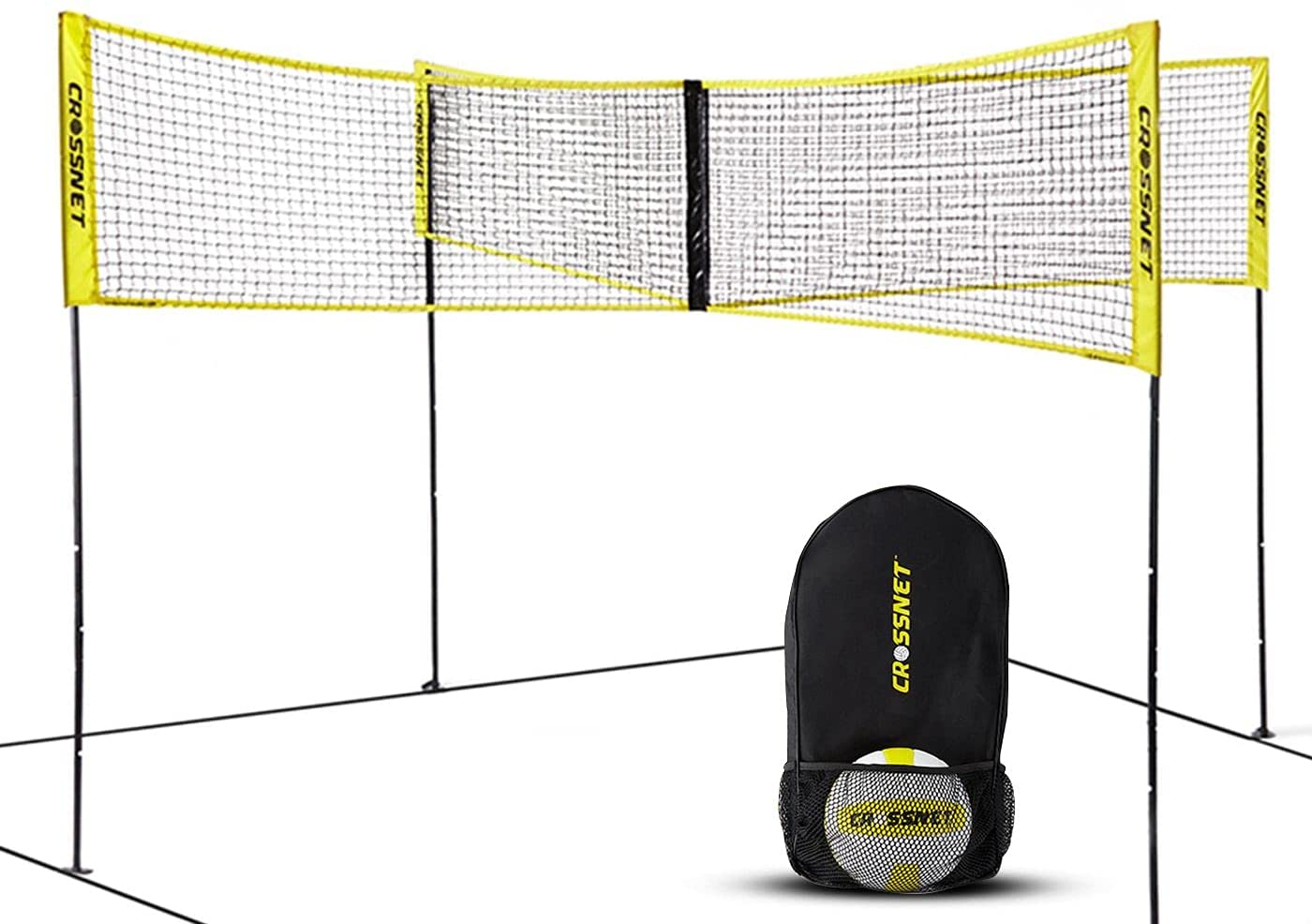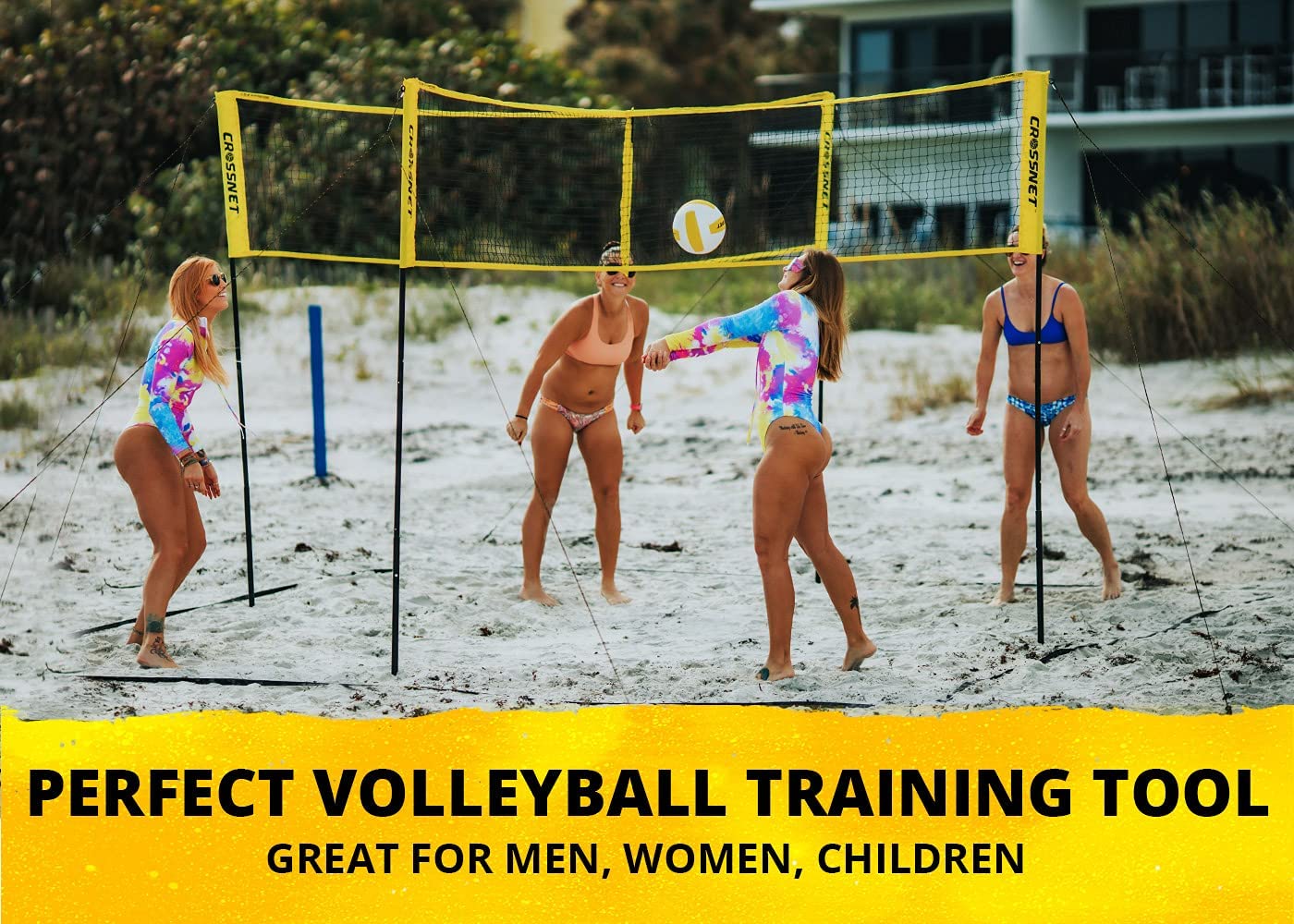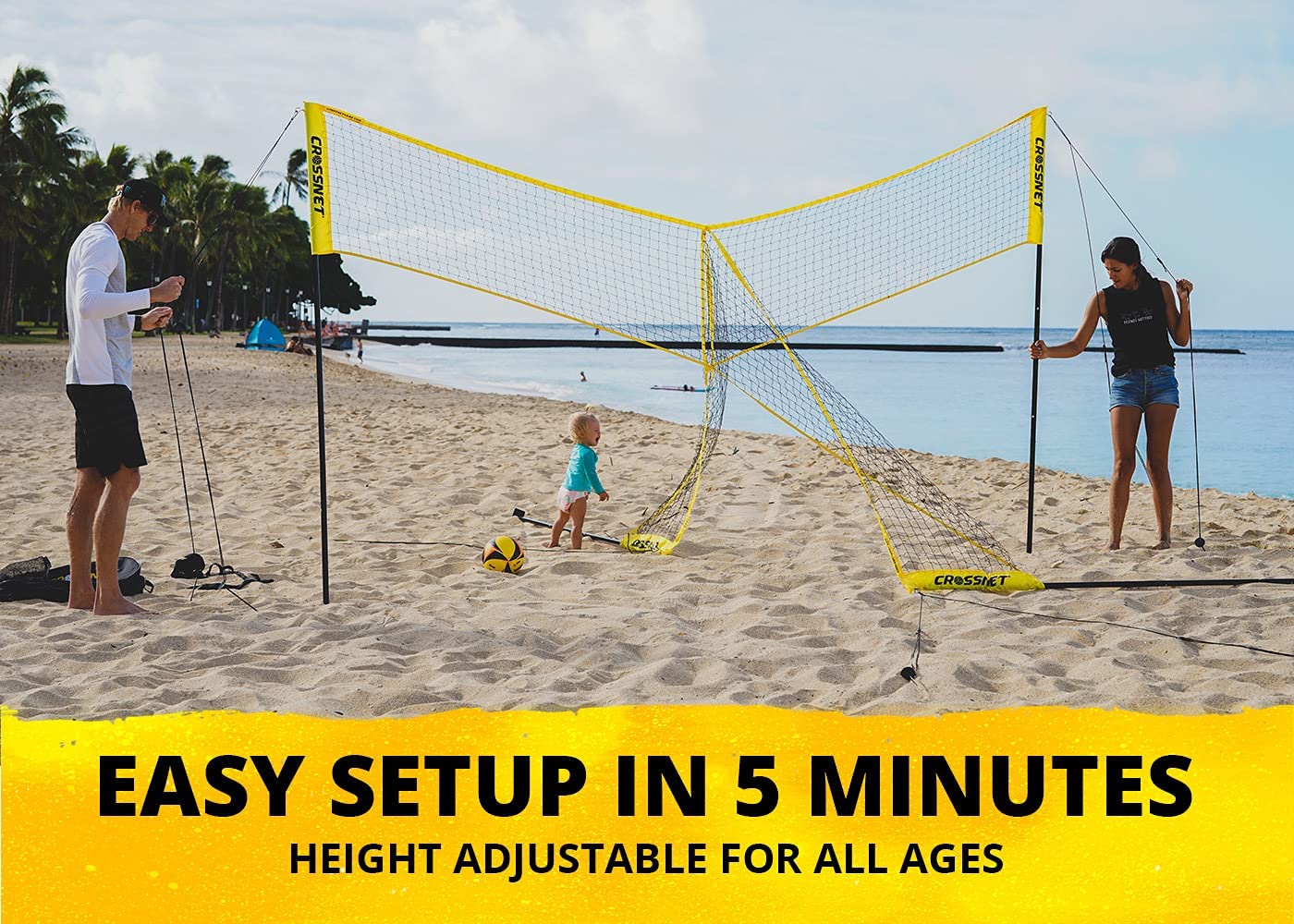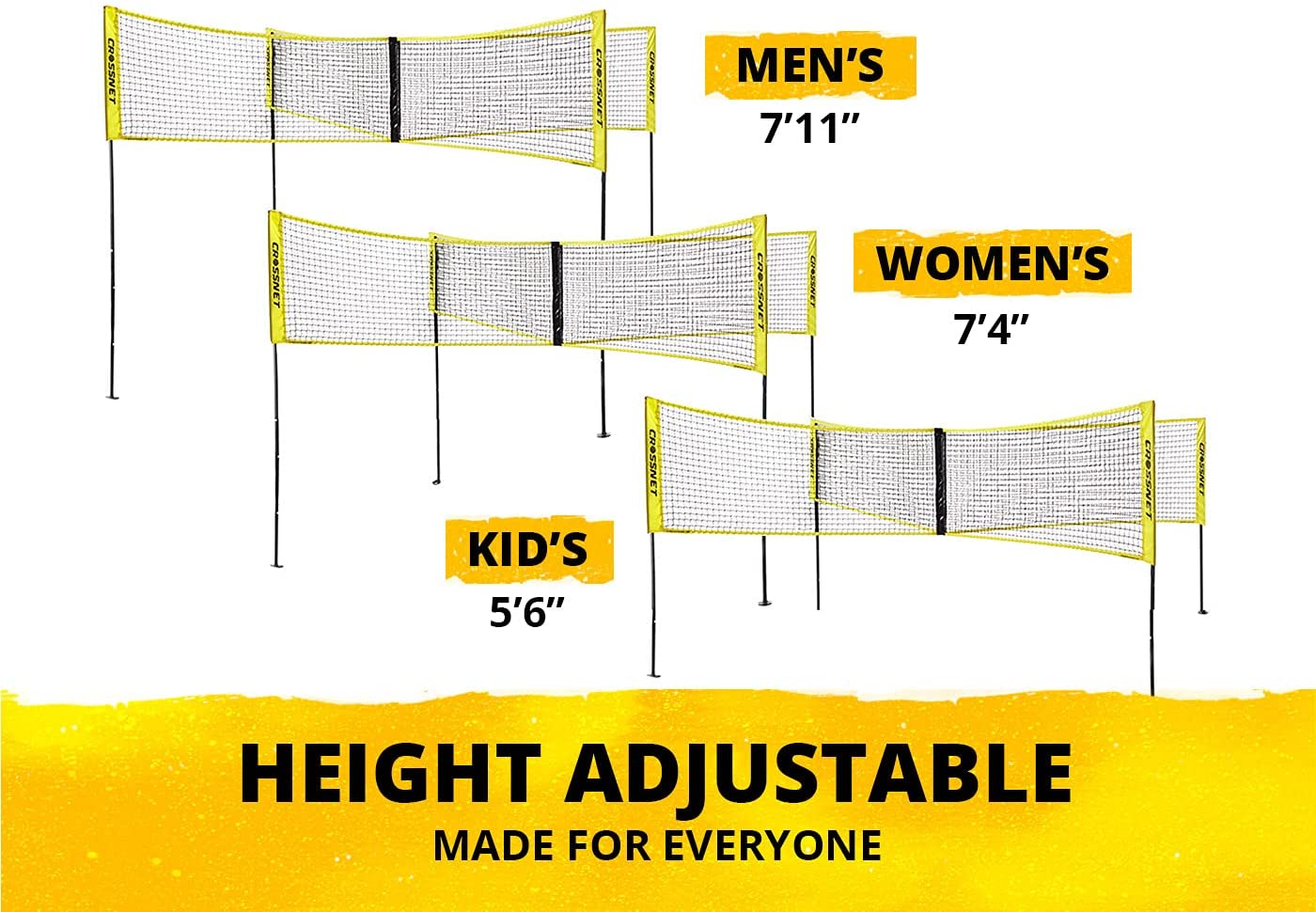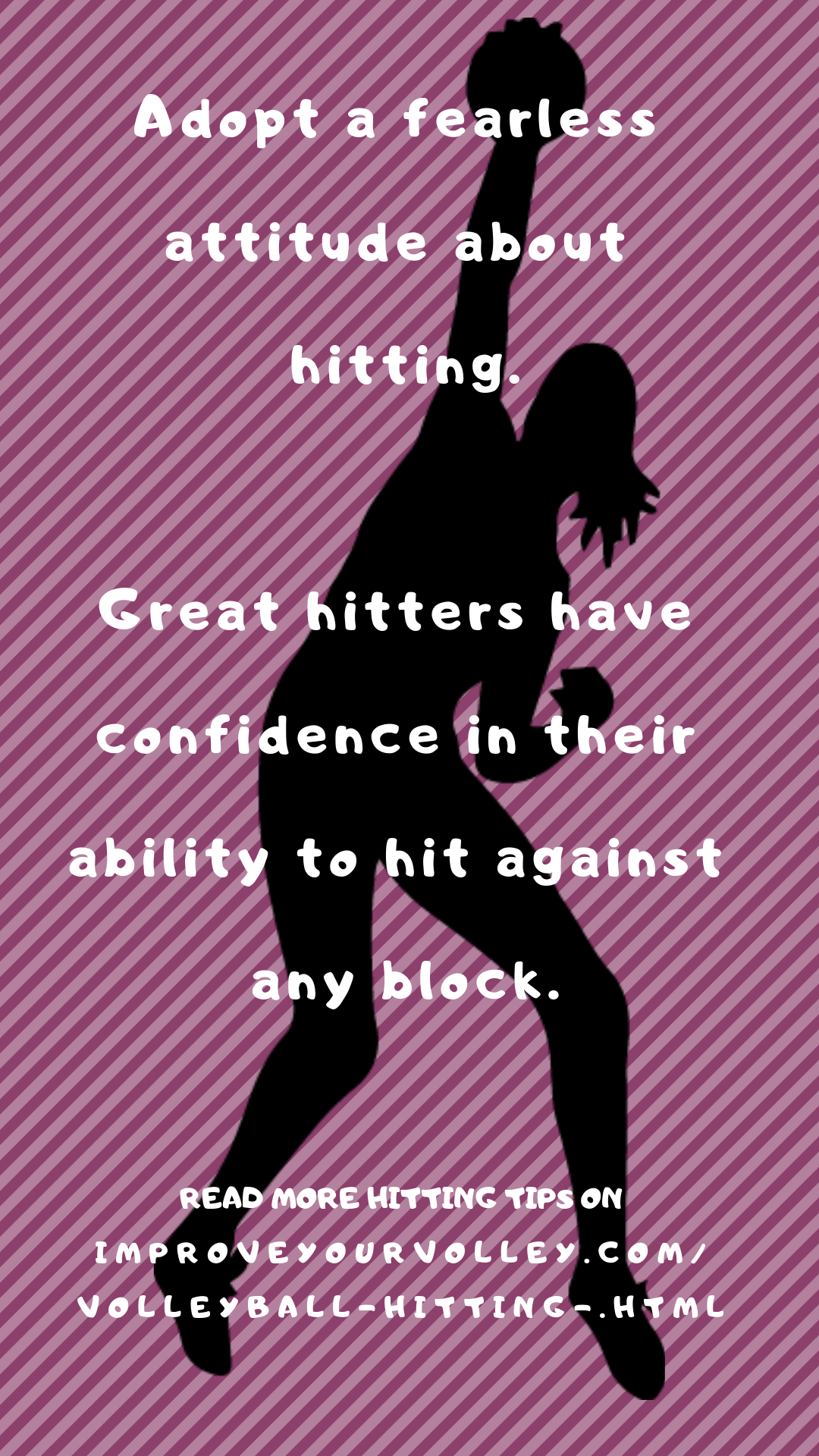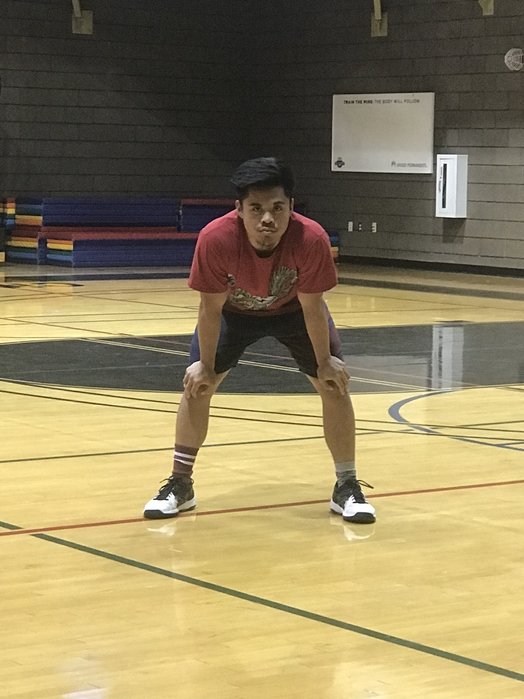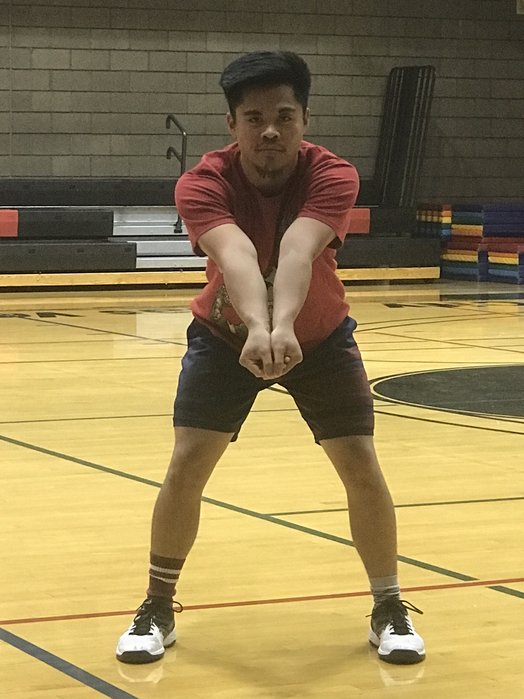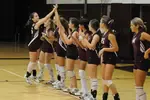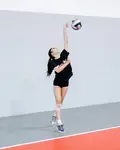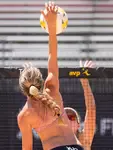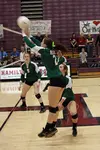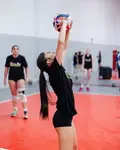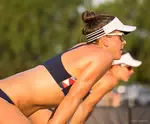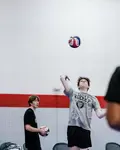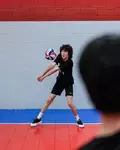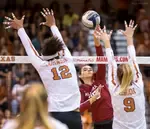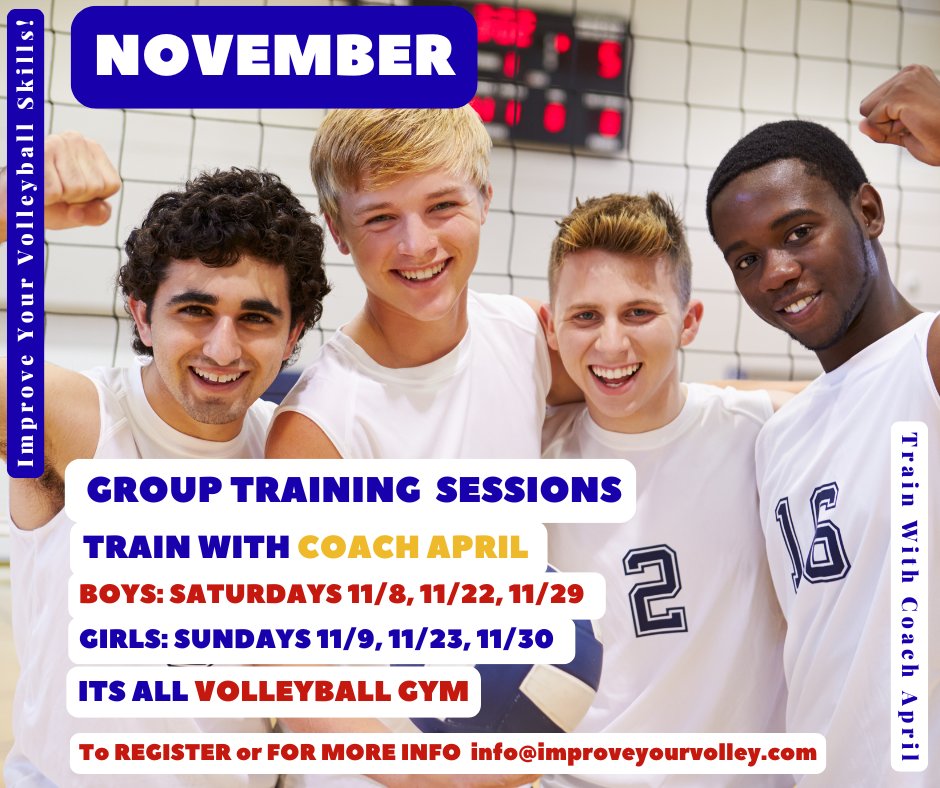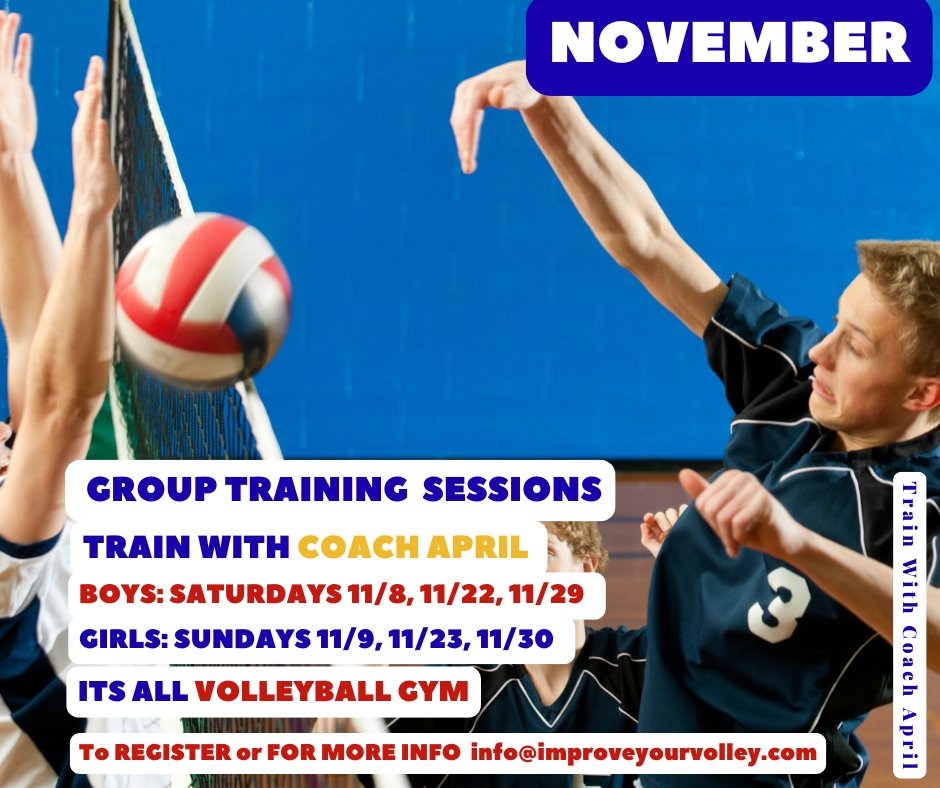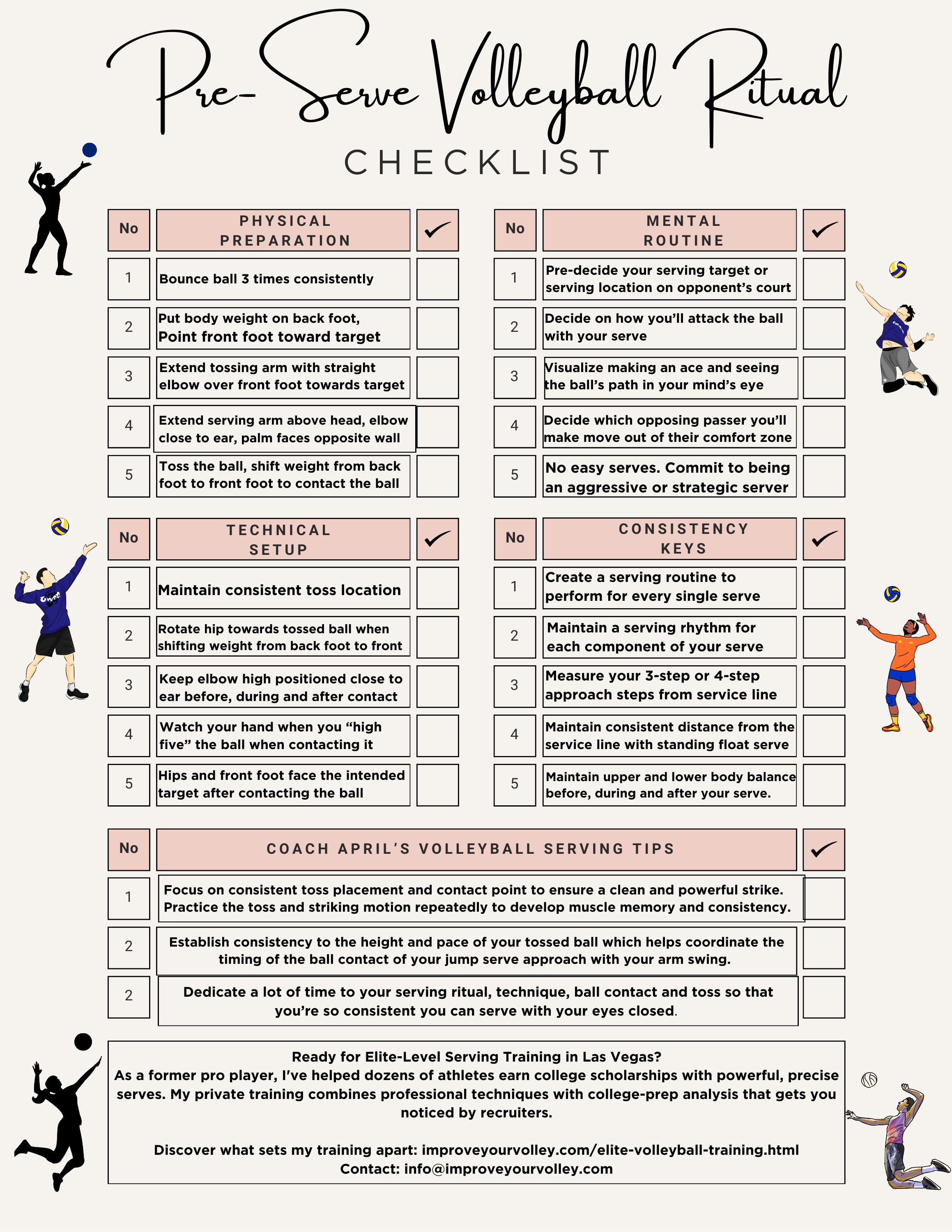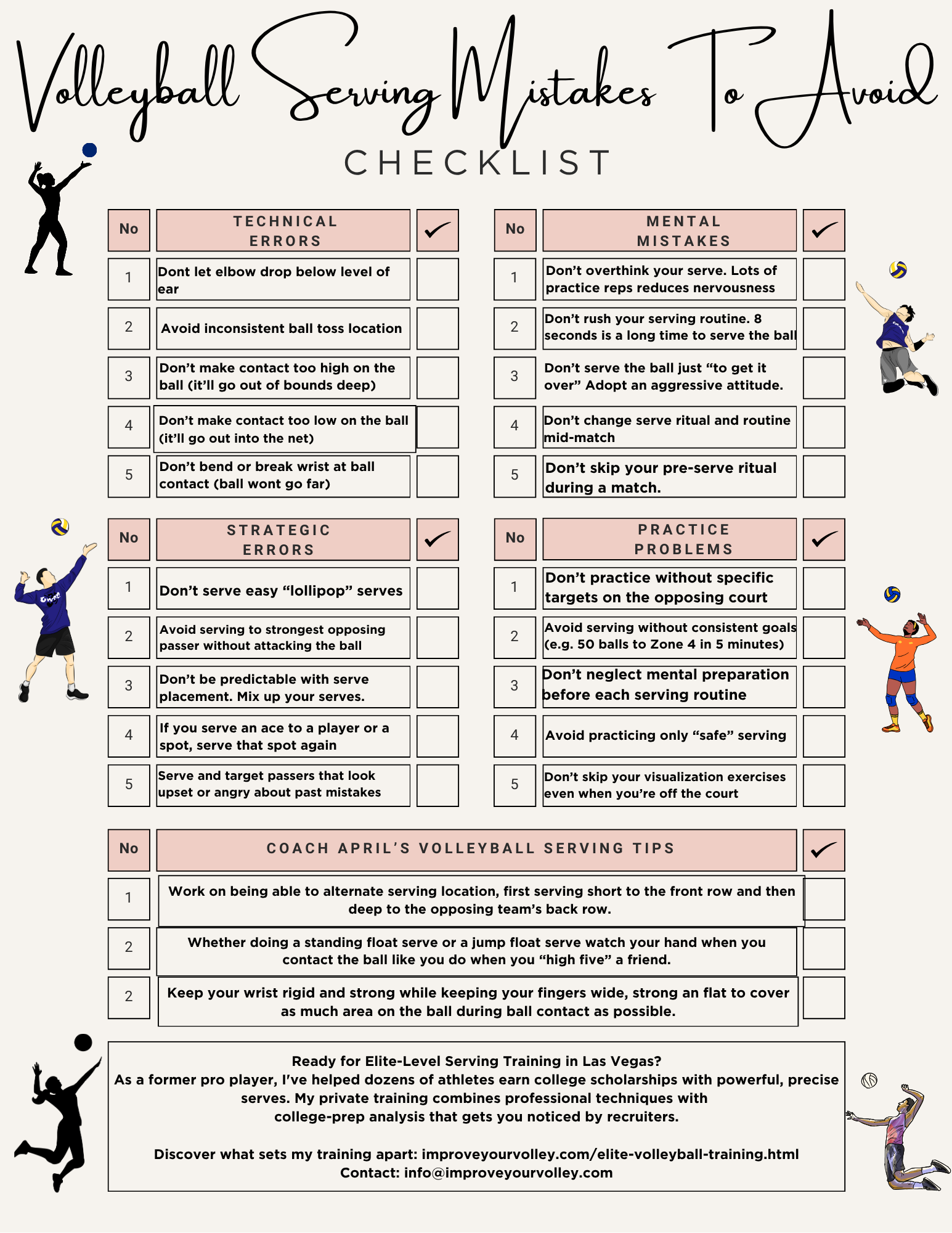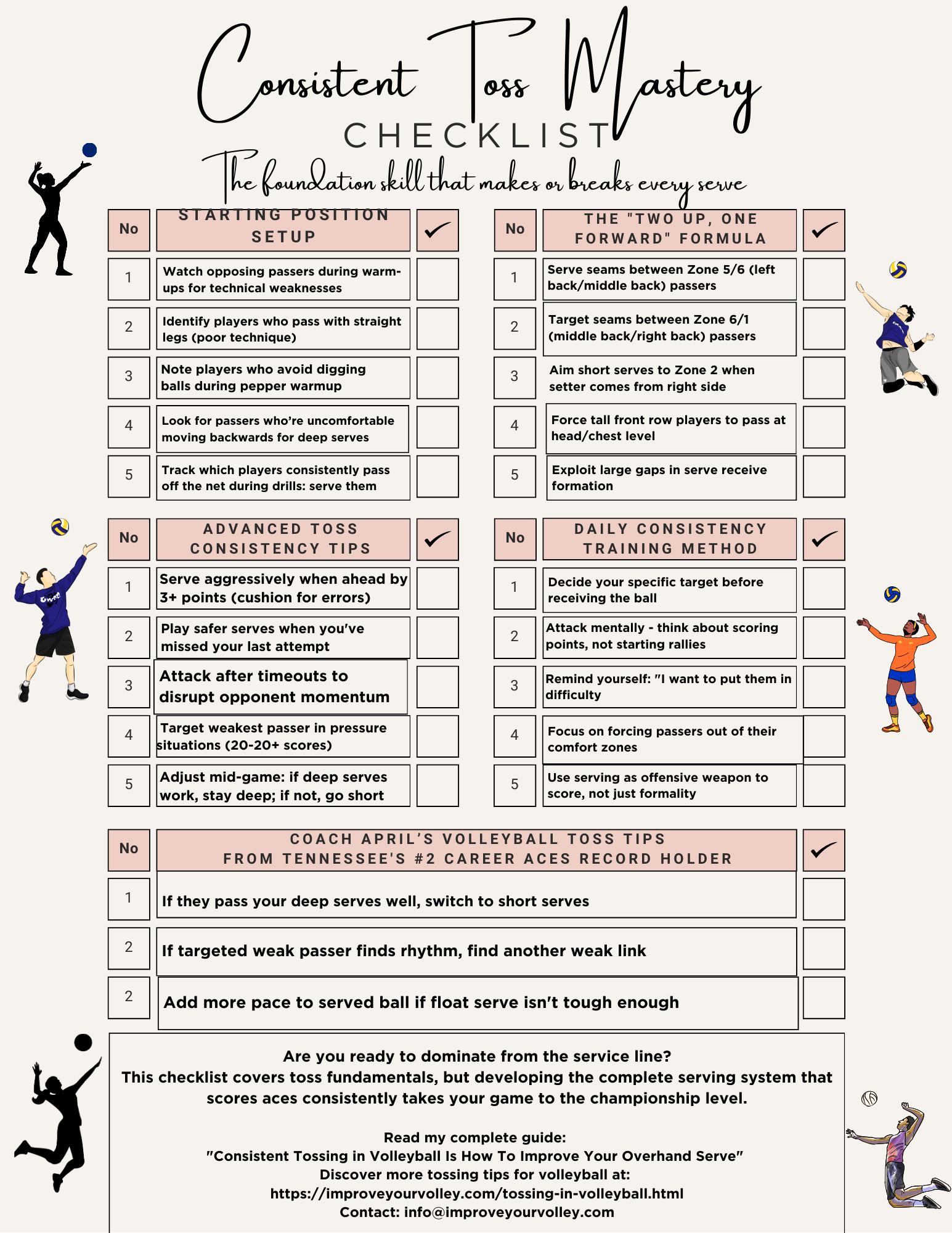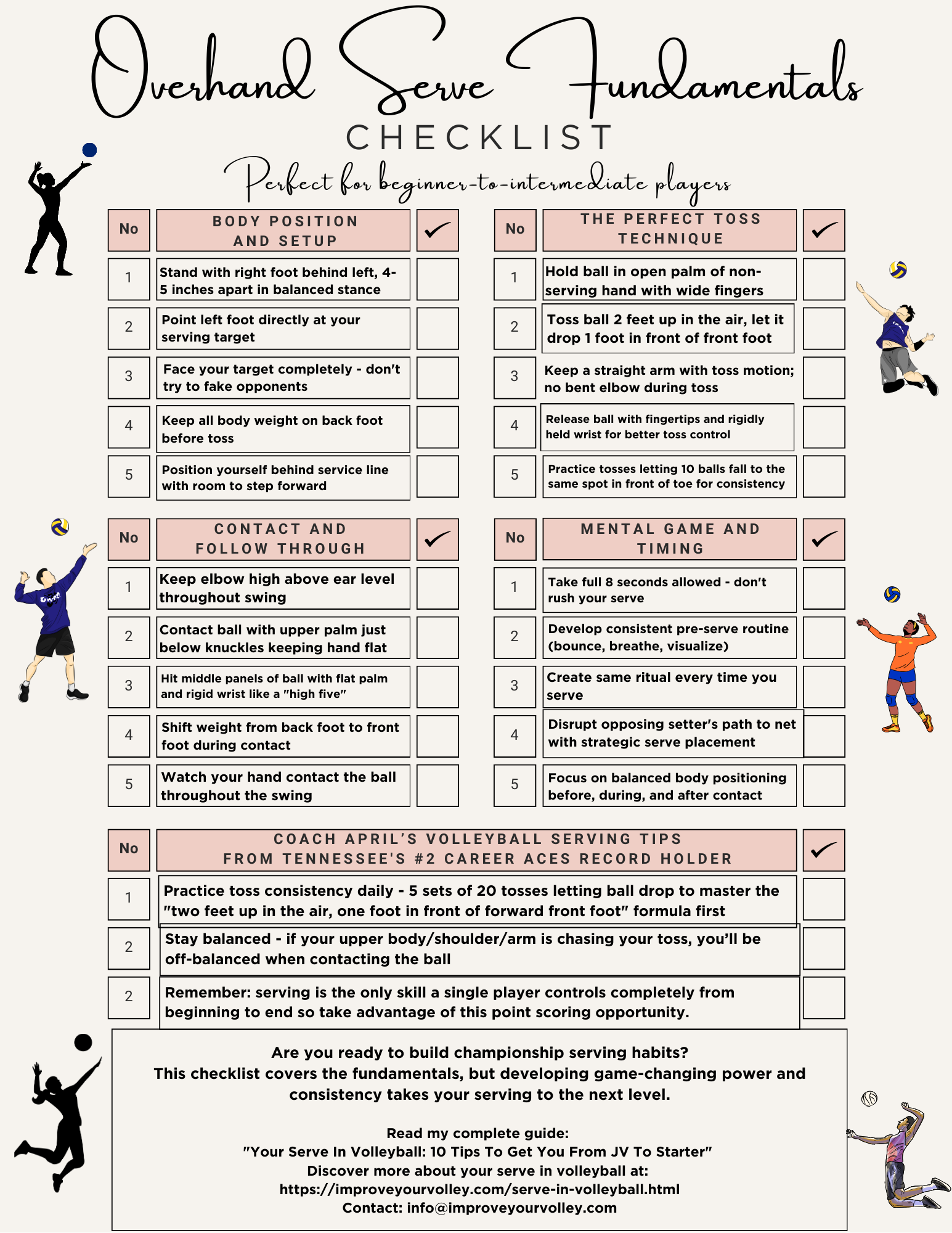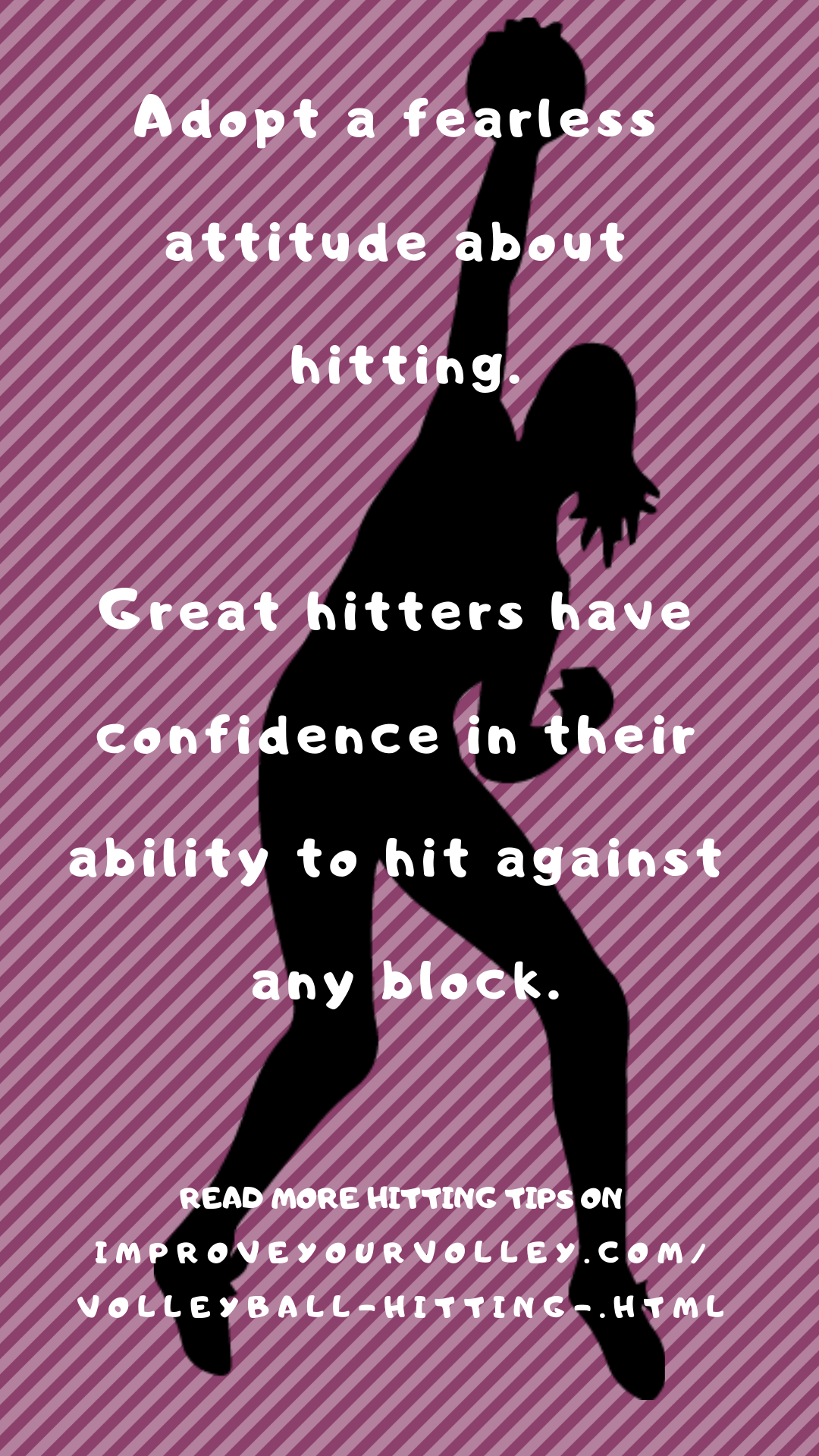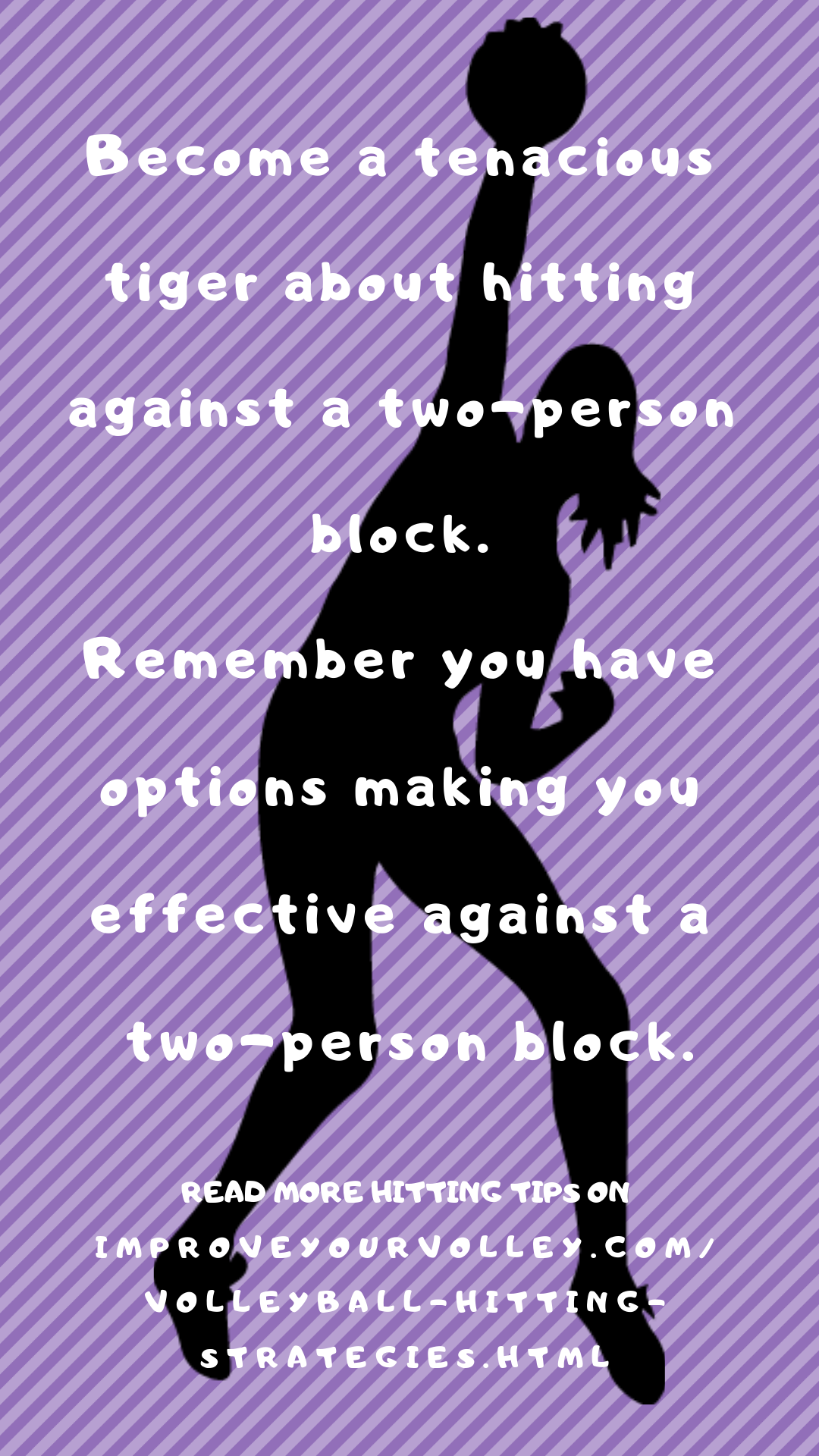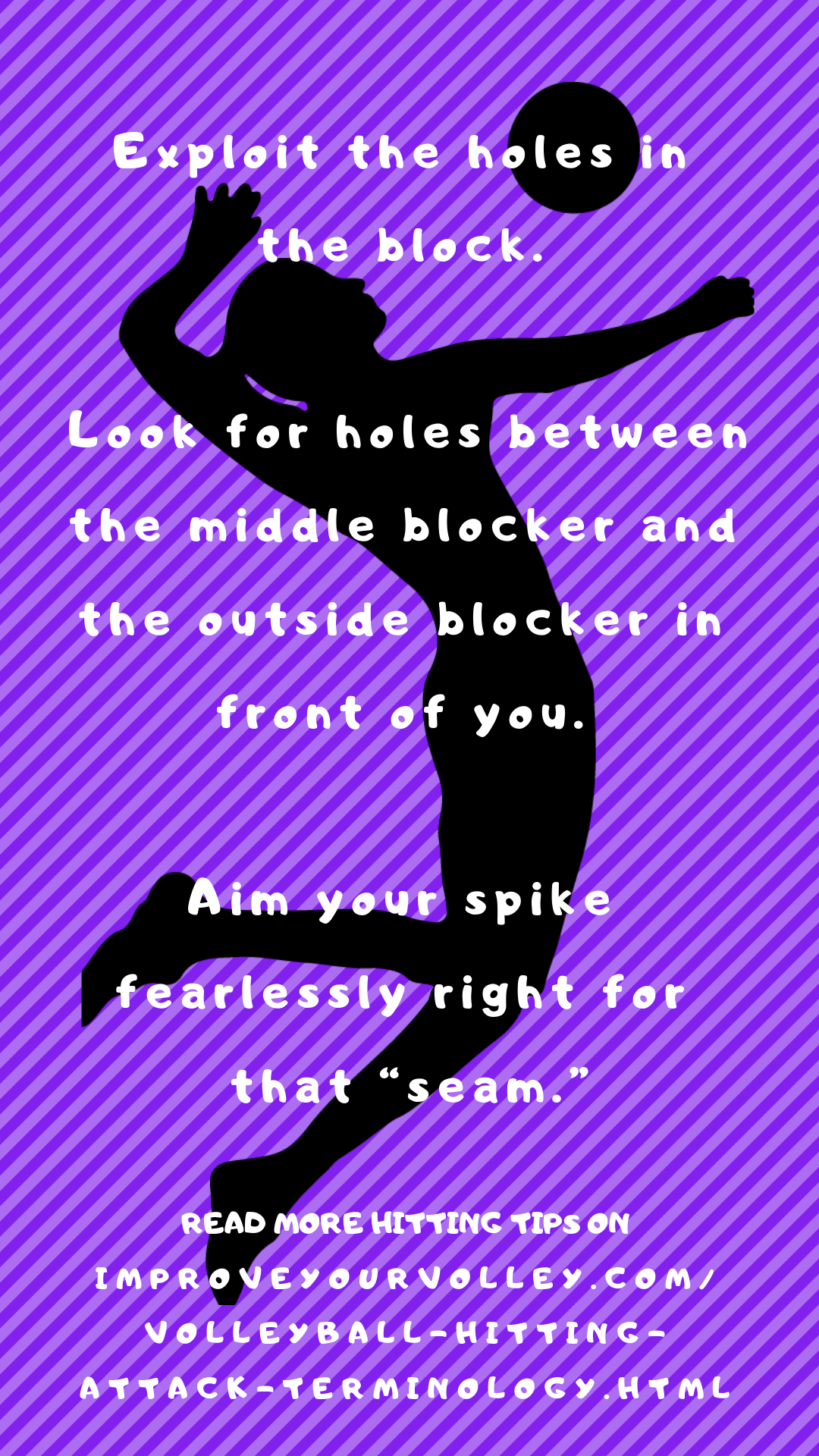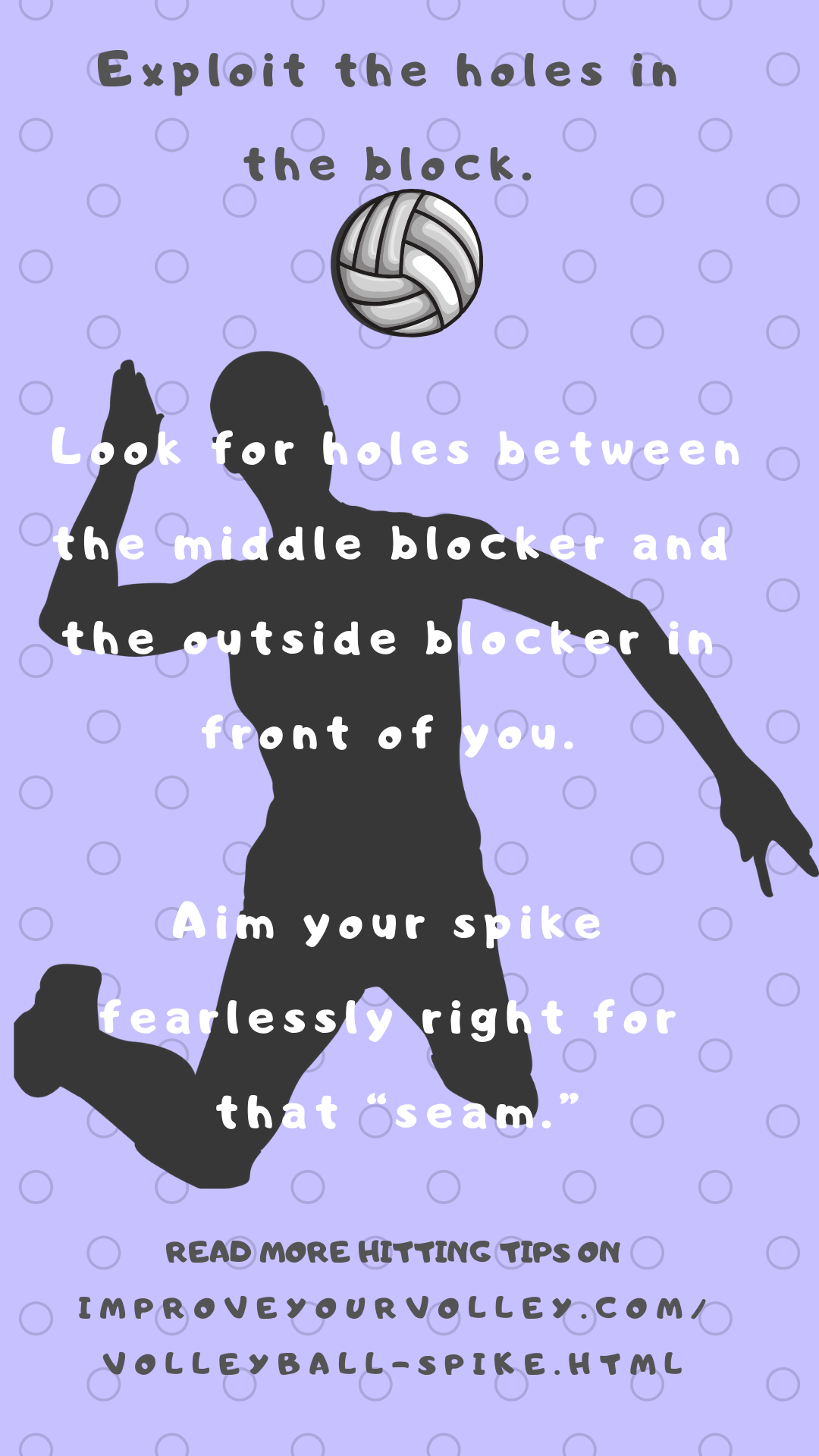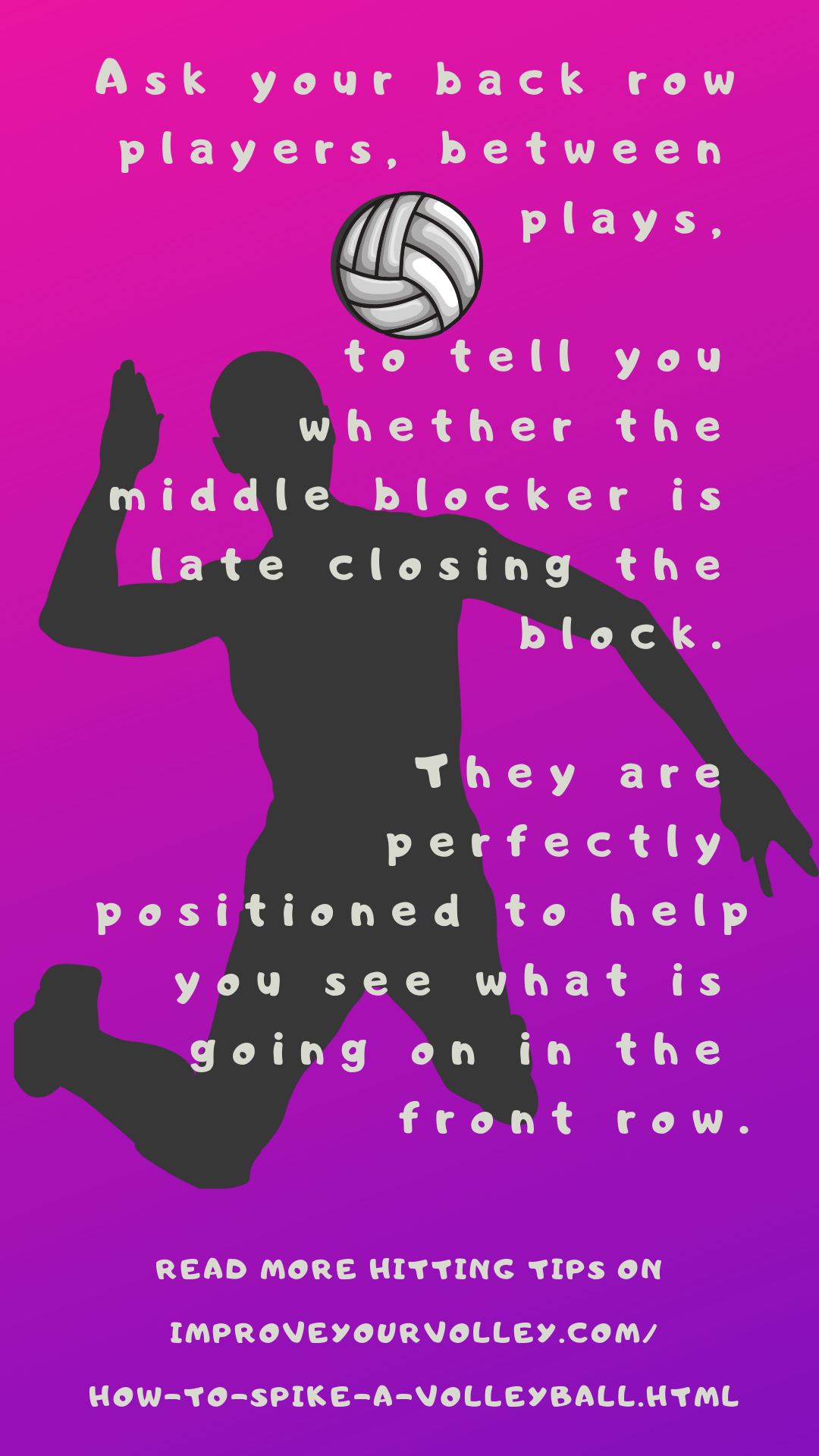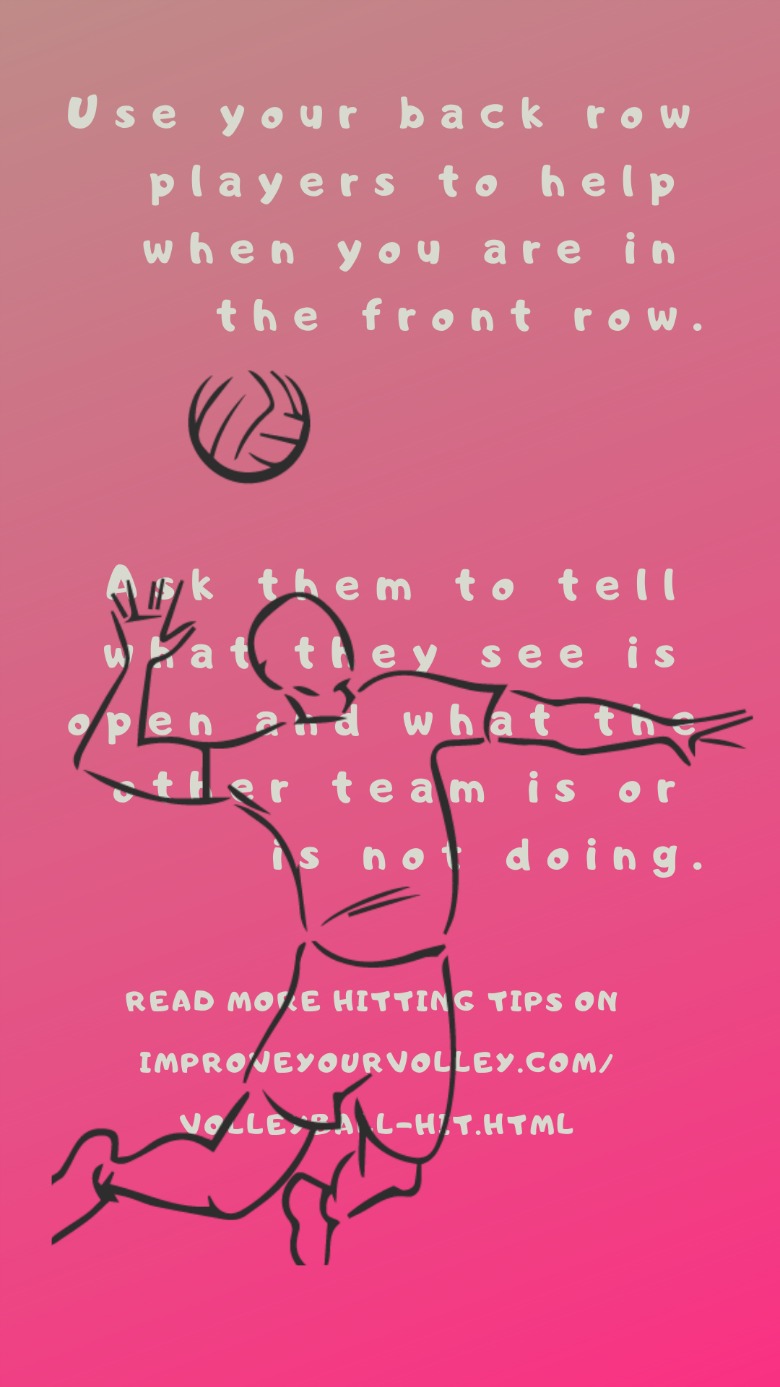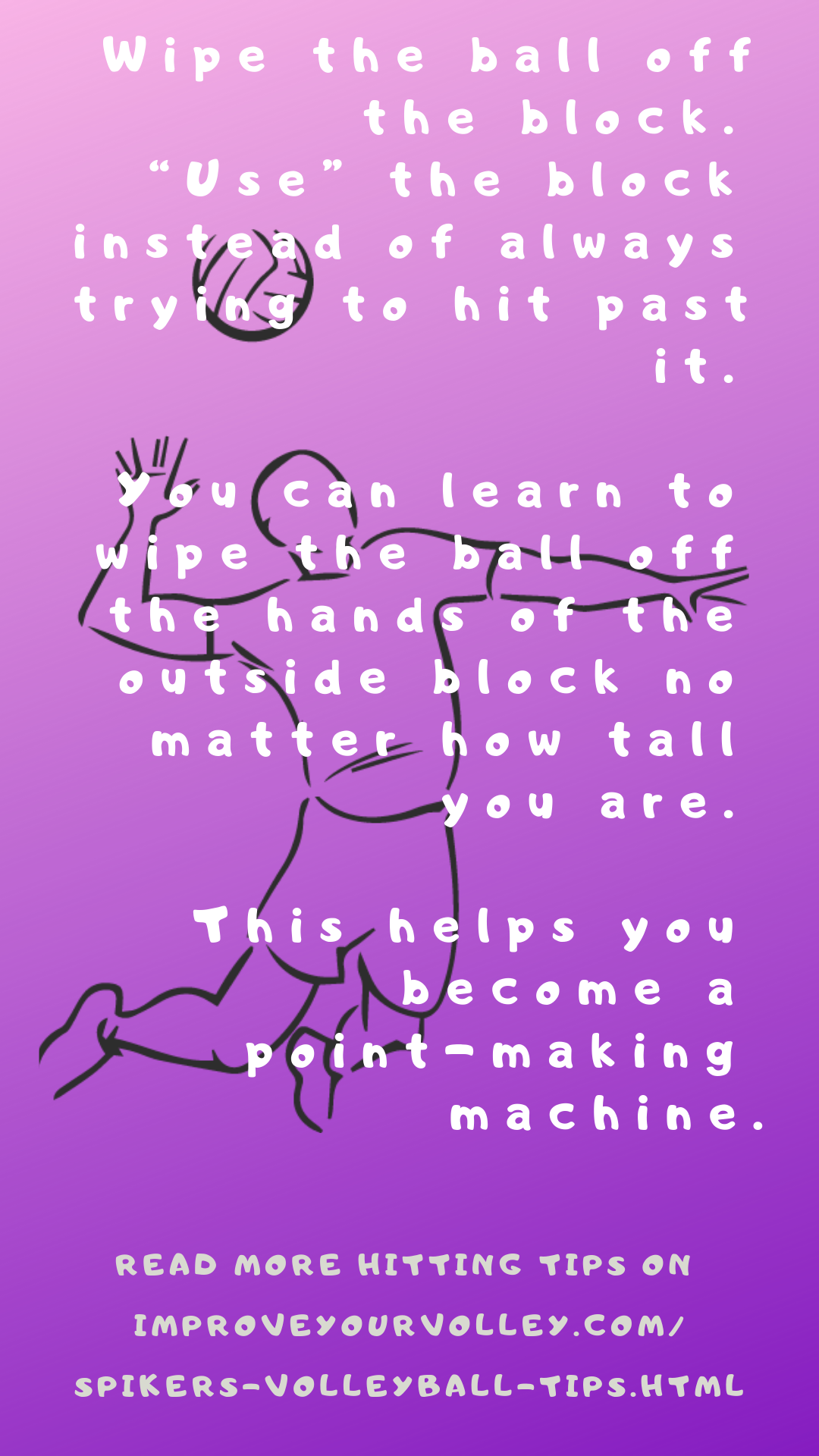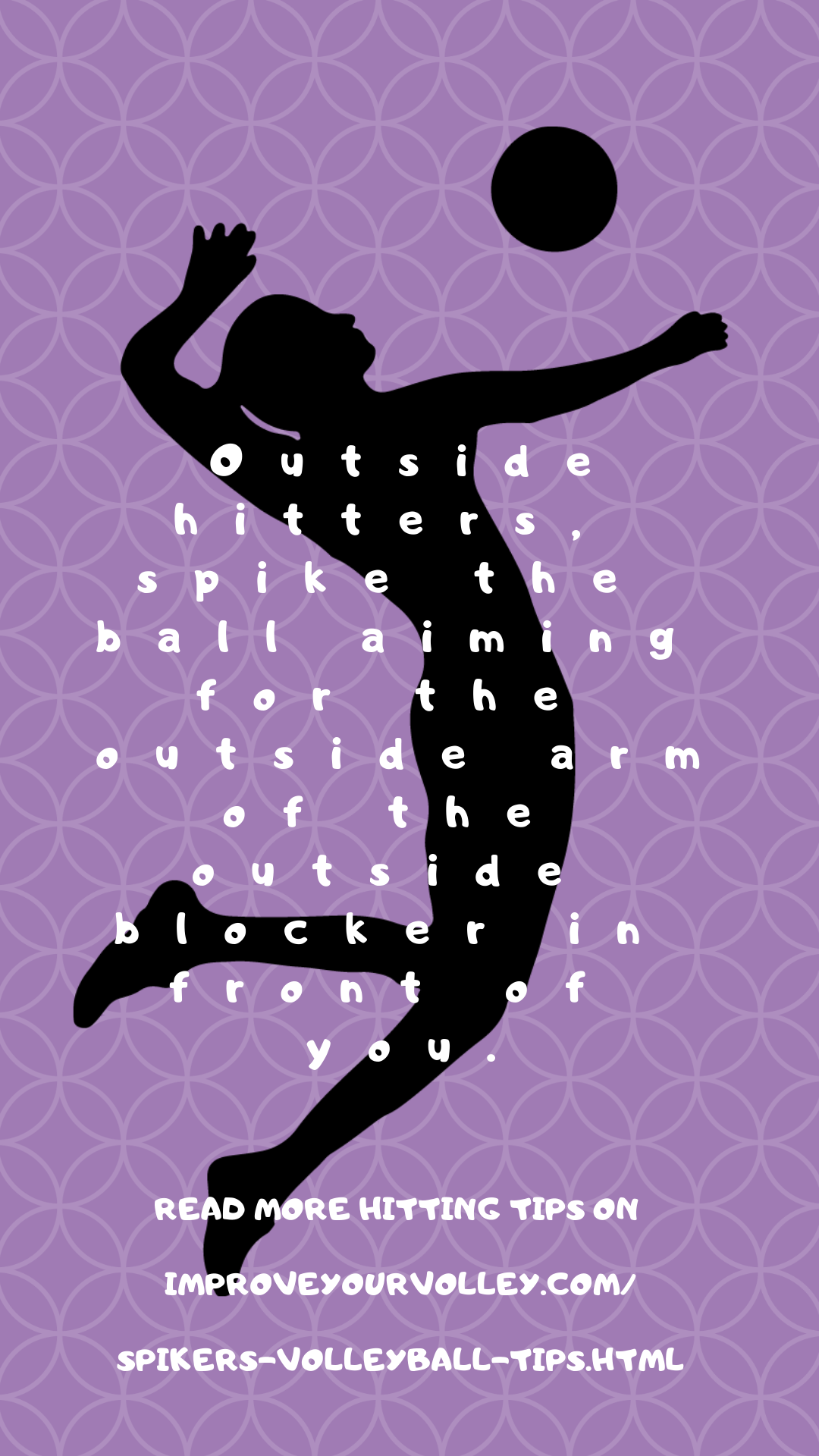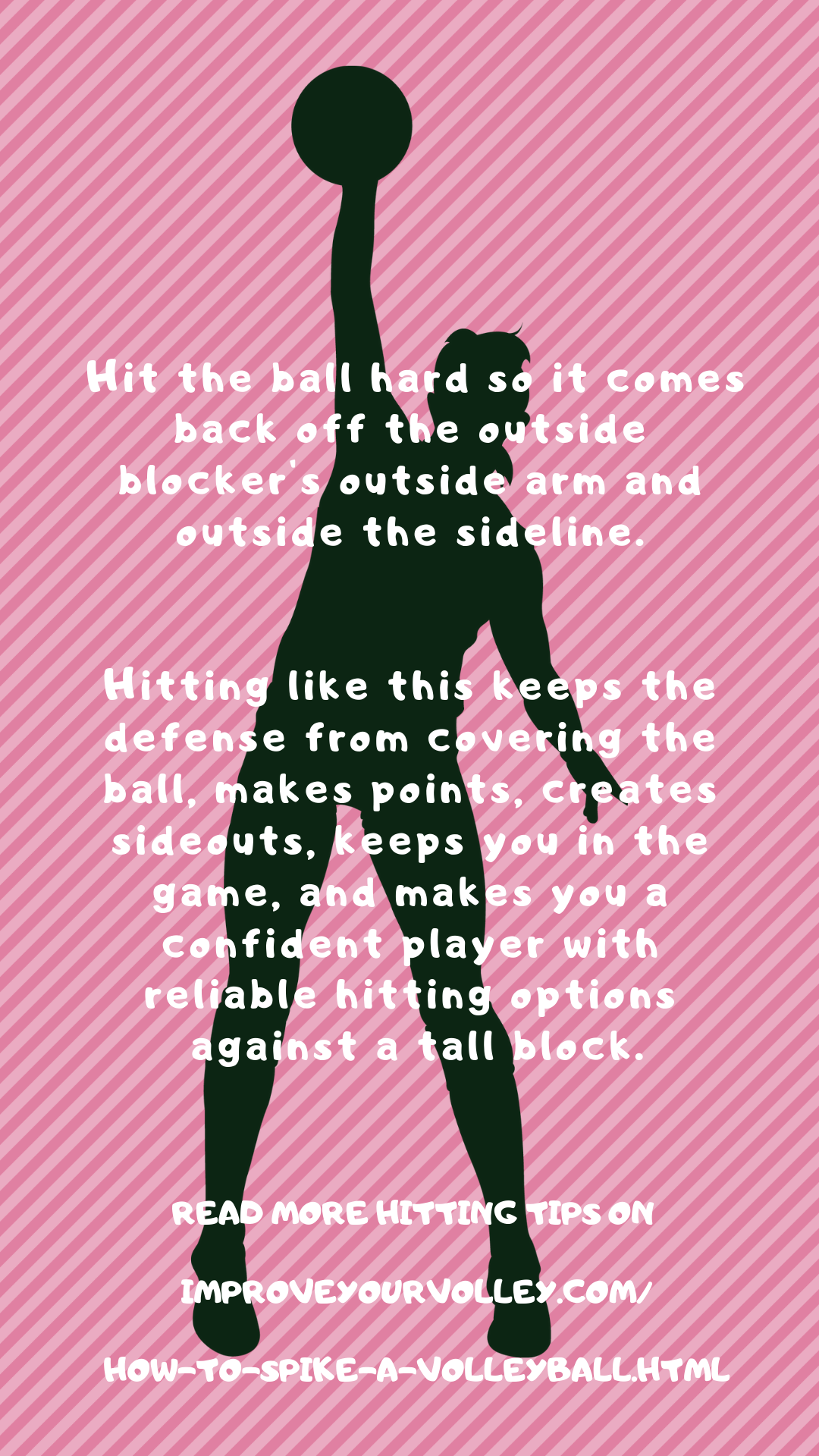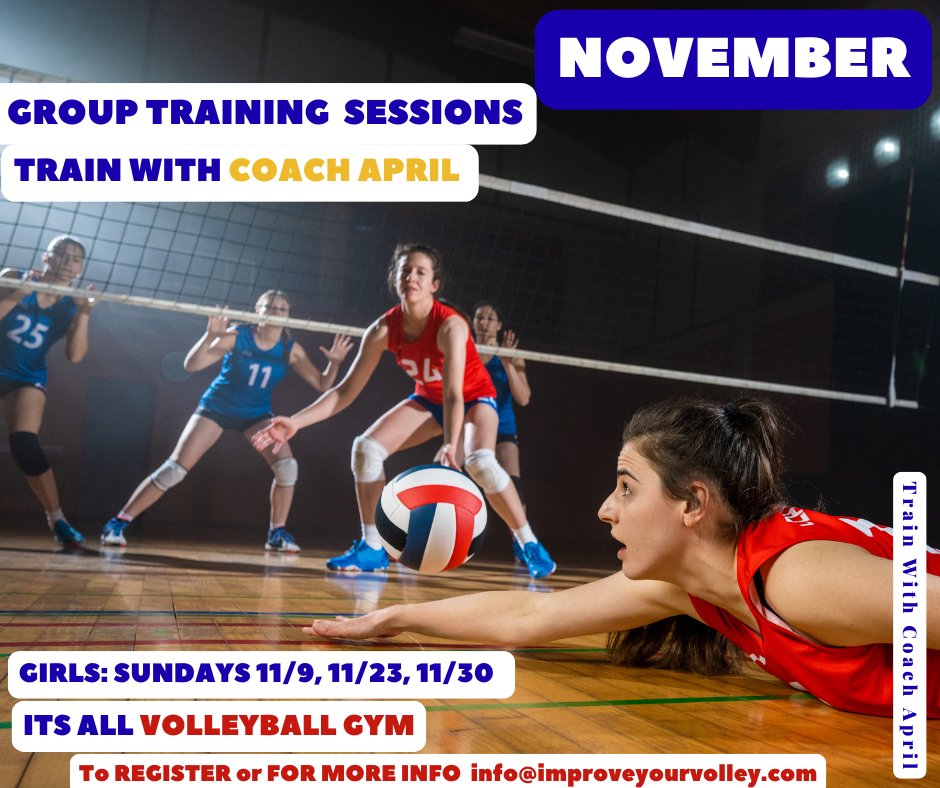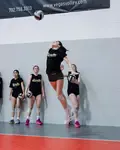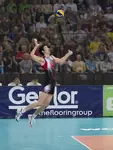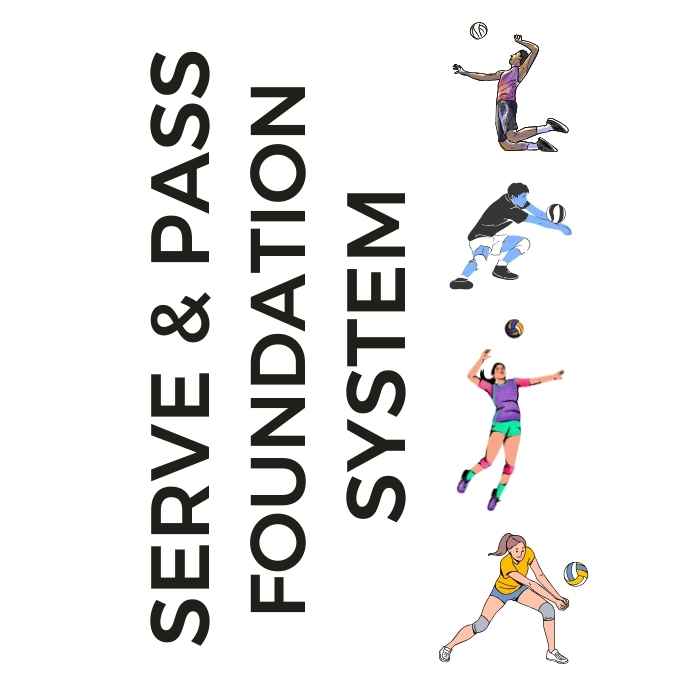
Serve + Pass Foundation System: The Complete Skills Arsenal The two-skill mastery system that transforms inconsistent players into the athletes coaches build their lineups around. Stop Struggling With The Two Most Important Skills In Volleyball!
- Improve Your Volleyball with Coach April
- How To Play Volleyball
- How To Spike A Volleyball
How To Spike A Volleyball Learn To Improve Your Attacking Techniques
Learning how to spike a volleyball requires the development of an aggressive attitude, improving your spike approach, and knowing how to increase your armswing speed.
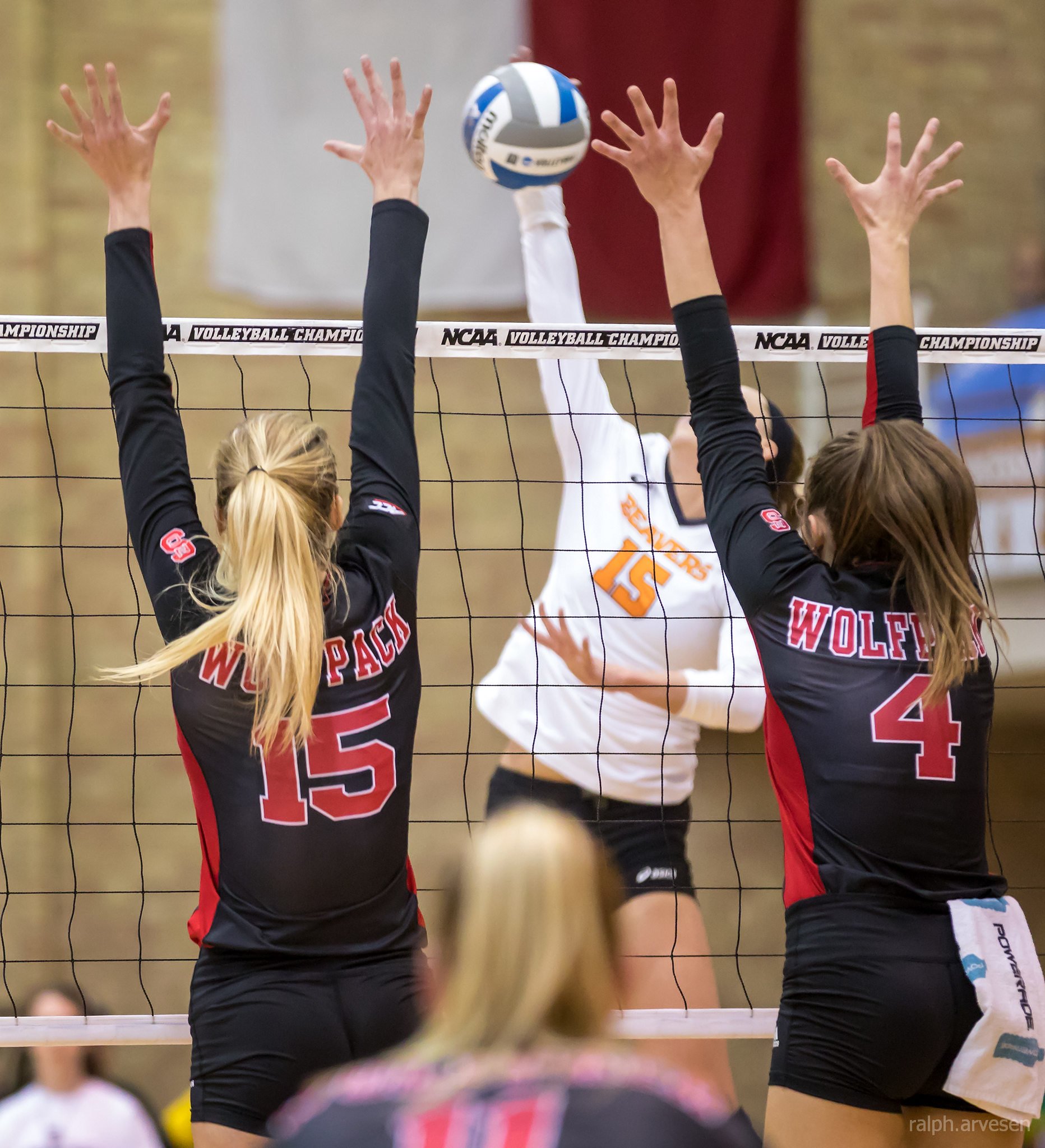 How to Spike A Volleyball: Oregon State volleyball hitter attacks high and hard against the seam of the North Carolina State double block (Ralph Aversen)
How to Spike A Volleyball: Oregon State volleyball hitter attacks high and hard against the seam of the North Carolina State double block (Ralph Aversen)When learning how to spike a volleyball there are several hitting strategies that spikers can use to get the ball past the opposing team's block in order to score points.
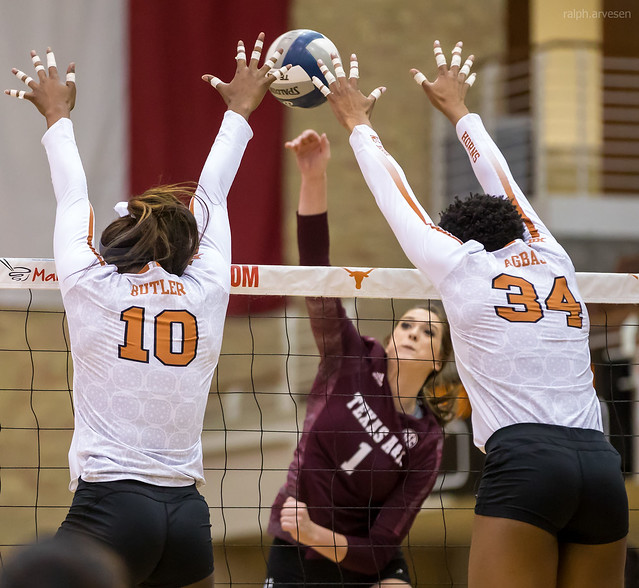 How to spike a volleyball: Texas A&M volleyball hitter aims for the seam of the Texas double block while attacking the ball. (Ralph Aversen)
How to spike a volleyball: Texas A&M volleyball hitter aims for the seam of the Texas double block while attacking the ball. (Ralph Aversen)Like professional hitters do, front row spikers should learn how to spike a ball through the seams of the opposing team's block.
To be an effective front row volleyball attacker, you have to adopt a fearless and aggressive attitude when it comes to spiking the ball against a two person block put up by the opposing team.
Your confidence should grow and develop as you do lots of spiking drills in practice as you repeatedly practice how to spike a volleyball aggressively.
It's in practice where you need to see the same types of situations that you will expect to see in a game.
Yes, of course you should be practicing against a single blocker because in a one-on-one situation where there's one hitter hitting the ball against one blocker, then the hitter should typically always win.
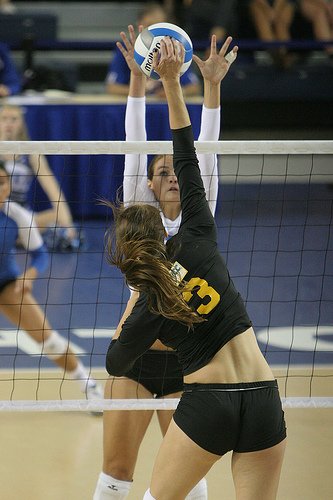 How to spike a volleyball: In a one-on-one situation where there's one hitter hitting the ball against one blocker, then the hitter should typically always win. (Blue and White Review)
How to spike a volleyball: In a one-on-one situation where there's one hitter hitting the ball against one blocker, then the hitter should typically always win. (Blue and White Review)In this case, the hitters have the advantage because they still have more court to hit to and one blocker can only take away only so much area.
But if you want to further develop into a great hitter and learn how to spike a volleyball past a big block then you need to practice spiking against a two-person block on a regular basis.
As a spiker you have to believe that you have the advantage against the block and in a one-on-one hitting-blocking situation, you, the volleyball hitter has the advantage.
In a two-man block vs. one outside hitter situation, the hitter can have the advantage if they use a few strategies to help them maintain their leverage over the block.
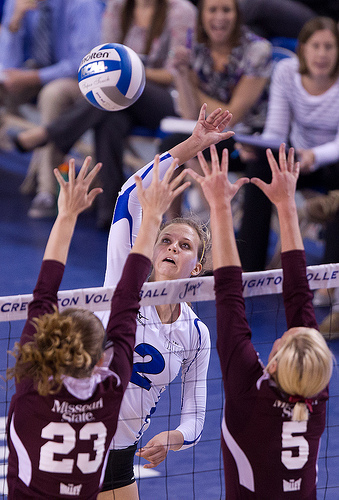 How to spike a volleyball: Big East Creighton outside hitter spiking against a Missouri State double block. (Blue and White Review)
How to spike a volleyball: Big East Creighton outside hitter spiking against a Missouri State double block. (Blue and White Review)First, an outside hitter has to change her attitude about her ability to "beat the block."
I can't emphasize this point enough. You have to be confident and you have to be aggressive on every attack after you've learned and can perform regularly the basic skills on how to spike a volleyball.
The player in the outside hitter position can be compared to players in the running back position in football and players in the forward position in basketball.
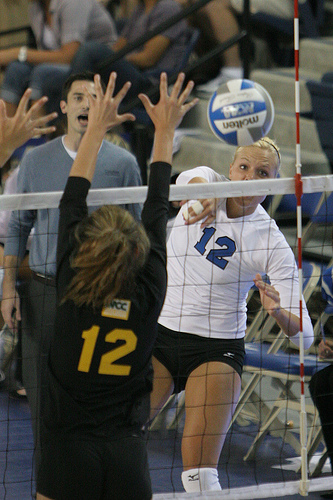 How to spike a volleyball: Outside hitters can be compared to players in the running back position in football and players in the forward position in basketball. (White and Blue Review)
How to spike a volleyball: Outside hitters can be compared to players in the running back position in football and players in the forward position in basketball. (White and Blue Review)The players in these three positions are counted on to score points for their team, so they will get the ball from their other teammates the majority of the time.
That's just a fact, the setter in volleyball is counted on to deliver the ball to hitters, the middle blocker is supposed to block the majority of balls and if you are a hitter then you will have to accept the fact that spiking the ball in order to score points for your team is what you will be counted on to do for your team.
How To Spike A Volleyball Learn To Improve Your Attacking Techniques
Hitting For Points Starts With Your Attitude
This means that outside hitters need to have major confidence in their spiking skills and to do this they need to have the mindset that no one is going to be able to block them.
Your confidence level needs to be the same no matter what type of block is in front of you and you need to believe that a two-person block can't stop your hits and definitely a one person block won't stop your volleyball hits.
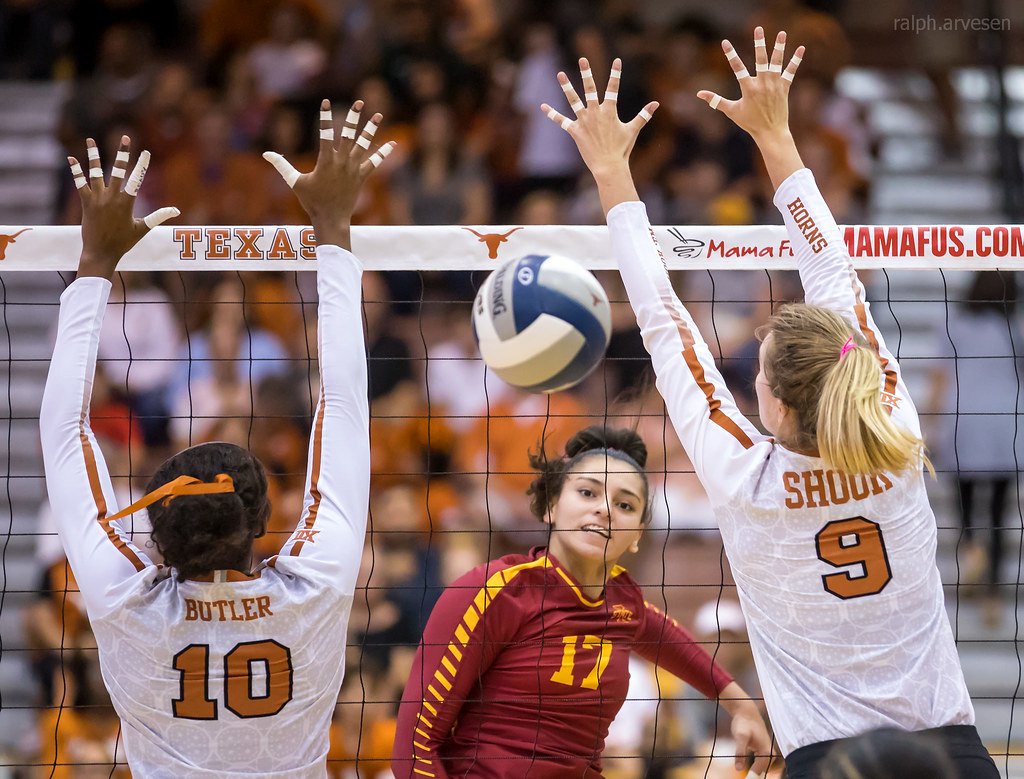 Your confidence level needs to be high no matter what type of block is in front of you and you need to believe the block can't stop your hits (Ralph Arvesen)
Your confidence level needs to be high no matter what type of block is in front of you and you need to believe the block can't stop your hits (Ralph Arvesen)If you do get blocked, then you need to believe that it was due more to something that you can change or correct with your spiking technique or strategy and not necessarily something that the opposing team's blockers did.
Coach April Chapple's Volleyball Passing Tips For Youth Volleyball Players
 Thanks for visiting. Be sure to check out more of my volleyball passing articles by clicking one of the links below! (April Chapple)
Thanks for visiting. Be sure to check out more of my volleyball passing articles by clicking one of the links below! (April Chapple)Do You Follow Me on Instagram?
Follow me on Instagram @coach_apchap to improve your game even faster!
I share alot of individual, partner and easy-to-do volleyball serving drills we do in class with my followers.
Many of these volleyball practice drills you can do at home by yourself or try at your next practice with your teammates.
If you're a B team or JV player trying to make varsity next year...your goal should be to complete 1000 reps a day of at least three of the basic skills on your own...volleyball passing, serving and setting should be at the top of the list.
Meet T.T. Mugb, aka "Things That Make U Go Boom"
Lion and Ouside Hitter on VolleyBragSwag's All Beast Team
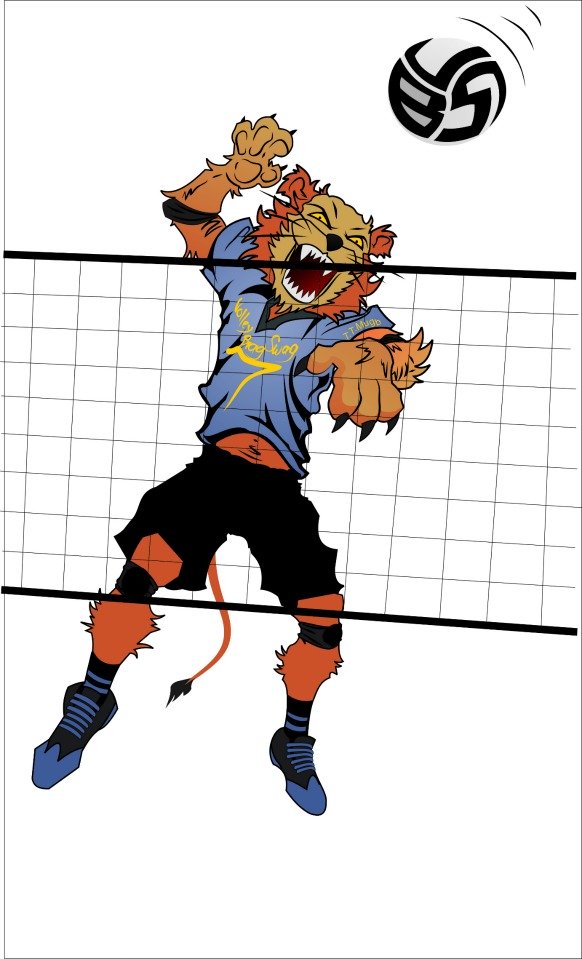
How To Play Volleyball:
Where Do You Go From Here?
Where do you need to go now? Here are three options:
- Learn more about How To Spike A Volleyball by checking the links in Related Links section.
- Follow the suggested reading on our Sitemap page Learning How To Play (Sitemap)
- Or visit the pages in the How To Play Volleyball section in the drop down menu at the top of the page.
- Improve Your Volleyball Performance with Vegas VB Coach April Chapple ›
- How To Play Volleyball So That You Improve And Make Your Varsity Team ›
- How To Spike A Volleyball Learn To Improve Your Attacking Techniques
- Improve Your Volleyball with Coach April
- How To Play Volleyball
- How To Spike A Volleyball
If your athlete struggles with consistent serve receive, gets subbed out, or is overlooked for playing time—this is the fix you’ve been looking for.

Struggling with passing consistency?
I help talented passers tired of getting pulled from games because of inconsistent serve receive skills BUILD passing confidence without expensive private lessons using the same 3-step system that's helped dozens of my athletes get recruited.
Download my eBook for $17.99 and start building the passing confidence that keeps you on the court—and gets you seen by college coaches.
From Lady Vol to Legend: Coach April Produces Powerful Passionate Players...is that you?
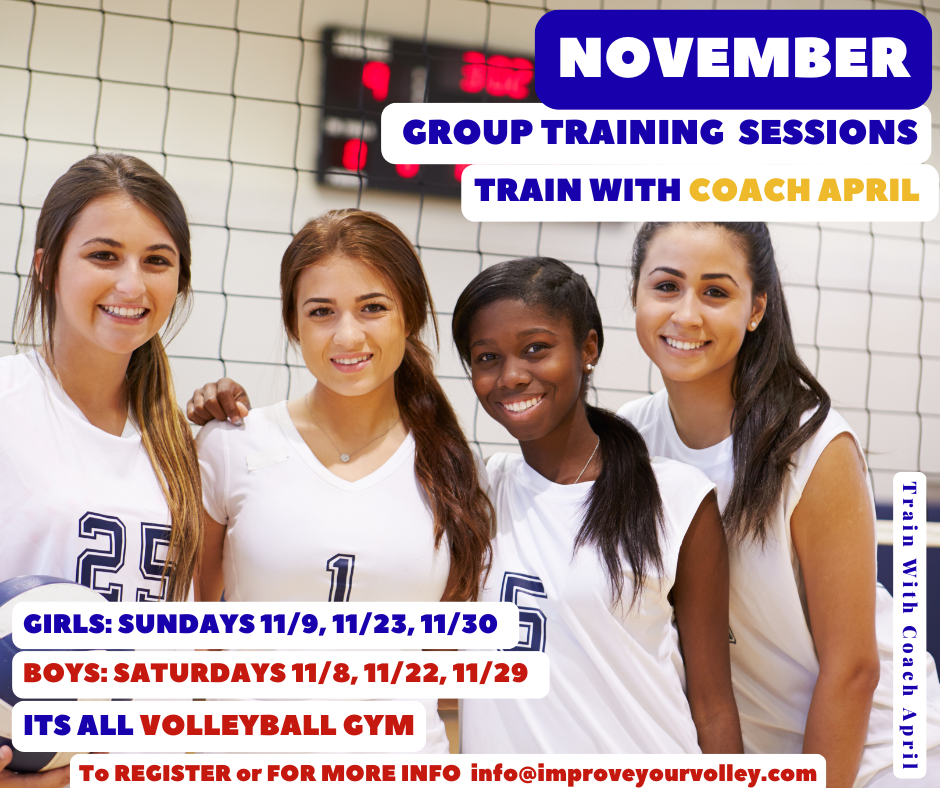
What Are You Looking For?
Click to Download Your Pre Serving Ritual Mastery Checklist pdf:
🎯Volleyball Pre Serving Ritual Guide -
Players! Learn How To Transform Your Serve from Weak to Weapon
Click to Download Your Parent's Volleyball Serving Checklist pdf
🎯Parent's Volleyball Serving Checklist Guide
Parents! Help Your Player Develop Championship Serves (Even If You've Never Played)

Hi there!
Thanks for stopping by. Hope you learned something today that will help you reach your volleyball goals.
Be sure to subscribe to my email newsletter so you can learn more each week!
Stay strong! Stay motivated!
-Coach April

SUSCRIBE to my email newsletter below!
 Click to learn more about the weekly volleyball classes and clinics or email info@imrpoveyourvolley.com for information
Click to learn more about the weekly volleyball classes and clinics or email info@imrpoveyourvolley.com for informationCongratulations to my seven Boys-18s Vegas Volley club players who played in two state championship finals yesterday, the 3A and 5A State champinship finals at Sunrise Mountain High School.
TOURNAMENT CHAMPIONS!
A-1 Vegas Volley VBC
In It To Win It Tournament
May 2 - 4, 2025 Tournament
Gold Medalists
18s Premier Division
Vegas Volleyball's Unsung Heroes: Celebrating Moms with Peace Love Volleyball Shirts
Ready to energize your volleyball mom journey?
Subscribe to my 'Producing Powerful Passionate Peaceful Players' email list above on ImproveYourVolley.com.
You'll receive energy-boosting tips, exclusive insights from me, Coach April Chapple on maintaining momentum in volleyball.
Let's power up the Vegas volleyball scene together!
Recent Articles
-
Real Coach, Real Results: Volleyball Training Shop My Small Business
Nov 30, 25 10:22 PM
Ditch big box stores. Get volleyball training from a real coach with real results. Woman and minority-owned. Shop checklists, ebooks and gear. Shop small today. -
How to Jump Float Serve: 3 Pro Volleyball Player's Secret Serving Tips
Nov 28, 25 08:34 PM
Why do college players rely on the jump float serve? It combines power with unpredictable movement. Learn how to jump float serve like the pros in this guide. -
Use A Jump Float Serve To Create Power For An Ace Or To Start A Rally
Nov 28, 25 08:32 PM
Use the overhand jump float serve to generate a powerful serve that starts a rally after the ref blows the whistle for the player behind the service line.
